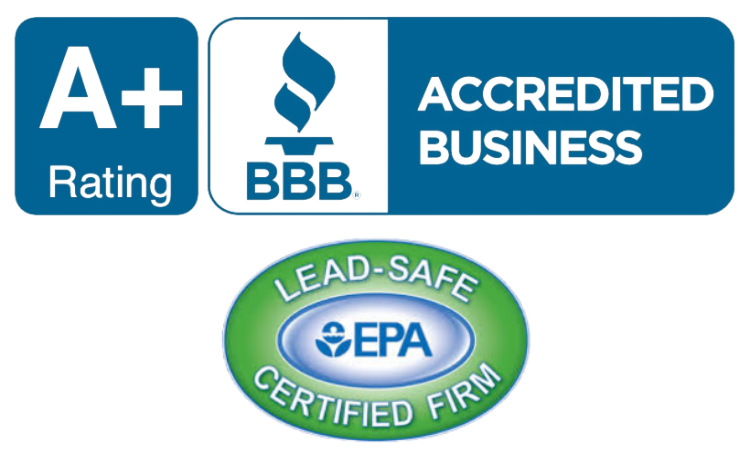Painting serves as a wonderful way to enhance the look of your home, yet when the paint starts to bubble, it can be quite frustrating. Bubbling paint not only spoils overall appearance but also indicates underlying issues that need attention. Understanding the reasons behind paint adhesion issues and discovering ways to fix them can lead to a superior paint finish. Let’s delve into the various causes of paint bubbling and explore effective solutions for each one.
Common Causes of Paint Bubbling
1. Moisture Problems
Water is one of the most common causes of bubbling paint, and it is, therefore, very important to ensure that the walls are not exposed to water to avoid paint bubbles. If moisture finds its way beneath the coating surface, paint may bubble or blister.
High Level of Dampness: Excessive dampness when painting may cause the formation of bubbles in paint when it is drying.
Water Intrusion: Presence of water from roofs, windows, or pipe bursts may lead to a bubbly effect on the walls.
Condensation: Lack of proper ventilation causes formation of moisture on the walls, more frequently in areas that have high humidity such as bathrooms and kitchens.
2. Poor Surface Preparation
The surface is always the key to having a great paint finish; therefore, it should be well prepared.
Oil and Wax: If the surface is not washed adequately before applying the paint, the paint cannot stick well to the surface.
Old Paint: If old paint is left remaining and in contact with new paint put on top of it, the new paint is likely to bubble.
Surface Compatibility: There are compatibility problems when a different type of paint is applied on a surface it’s not meant for—for example, applying an oil-based paint on a latex surface.
3. Applying Thick Coats
The paint should be prepared and spread very thinly and evenly to have the best results.
Wrong Tinting Technique: Incorrect use of paint, such as applying the paint in order to cover the earlier applied paint without giving it enough time to dry appropriately, is also one of the causes.
High Pigment: Some of the available paints contain a lot of pigment which can cause it to bubble if applied in a thick layer.
4. Excessive Heat
Heat, also, affects the drying process and can result in bubbling.
Direct Sunlight: It is not good to paint directly under the sun for it dries up the paint and can entrap air and moisture.
High Humidity: It is also not recommended to paint at high temperatures with high humidity since, upon drying, it will result in the formation of bubbles.
How to Fix Bubbling Paint
After knowing the cause of the bubbling, further measures can be taken to sort out the problem and to avoid such experiences in the future.
1. Address Moisture Issues
Fix Leaks: Any damage in houses that may allow water to seep into the structure must be well addressed.
Improve Ventilation: Open doors and windows, use exhaust fans to prevent humidity, and avoid the formation of condensation.
Testing to Dry Conditions: Paint when the climate is dry to reduce the chances of moisture under the paint.
2. Proper Surface Preparation
Some advice on how to get rid of future paint bubbles:
Preparation of the Surface: When it comes to cleaning the walls, every bit of dirt, grease, and dust must be thoroughly removed from the surface. When dealing with a greasy surface, it’s best to use a degreaser. This will assist you in thoroughly cleaning the area.
Stripping: Remove old and loose paint using paint scrapers, and sand the surface until it becomes smooth.
Prime the Surface: The surface needs to be primed when choosing a new paint type so that it will bond properly.
3. Apply Paint Correctly
Employing a proper approach can assist with managing bubbles:
Smooth Surface: Surfaces achieve a smooth finish when coated with thin layers of paint, ensuring that there is enough time between the application of each subsequent coat.
Follow Manufacturer’s Instructions: Follow the instructions that have been provided by the paint maker on how to apply the paint and how long it will take for it dry.
Paint Should Not Be Applied to Hot Surfaces: Painting should be done during the cool time of the day or in shady areas and should not be exposed directly to the sun.
4. Selecting the Correct Paint
Choose the right paint for your surface:
Consult Professionals: If in doubt, always seek guidance from a painting professional on which kind of paint to use for the intended project.
Compatibility: Make sure the new paint will work well with the existing coat or the surface you plan to paint.
Preventing Paint Bubbling in the Future
In order to prevent bubbling paint from happening in the future, here are some precautions that you should undertake:
Efficient Maintenance: Homeowners should regularly inspect their properties to identify and address any moisture-related issues.
Seasonal Work: Painting should be done during a season that has moderate temperature and humidity to allow the paint to dry well.
Hire a Professional Painter: If it is too complicated of a job, hire a skilled painter to do it.

